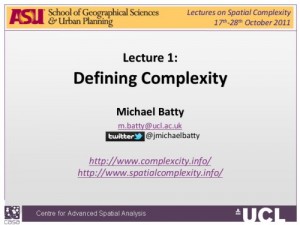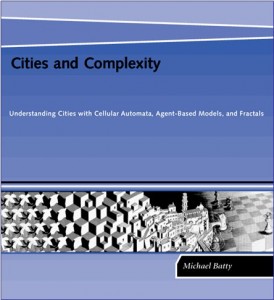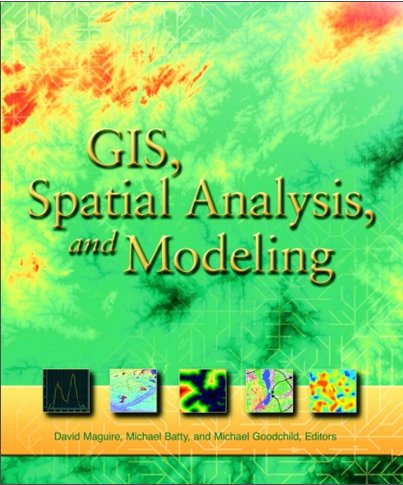Defining Complexity
The first lecture sketches the background to spatial complexity. We argue that complex systems are systems that contain multiple interactions between their component parts, the elements; systems that are growing or changing qualitative with new interactions being formed; and thirdly systems that are inherently unpredictable and break with the hallowed canons of science which involve simplicity and parsimony. Systems Theory has given way to Complexity Theory with the evolution of new forms of dynamics and the notion that systems that we are concerned with here – cities, societies, economies and so on – display emergent properties, surprising dynamics and are for ever in disequilibrium. The lecture then sketches three basic relations that build on size and scale that are the signatures of complex systems.
Here is the lecture. Click on the Full-text PDF size: 564 Kb or on the adjacent image. The lecture was first given on Monday 17th October and posted that same day. It contains the background to the course and points to the key background references to the material on this site.Refer to the Bibliography page for these details and where you can download them.









